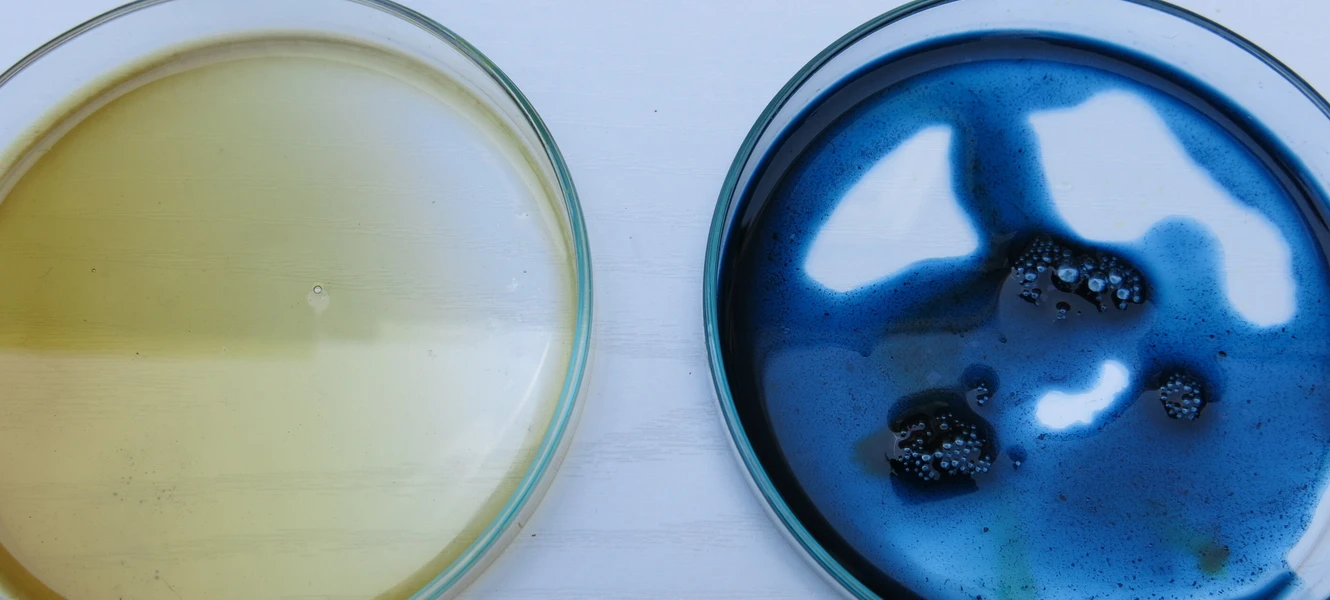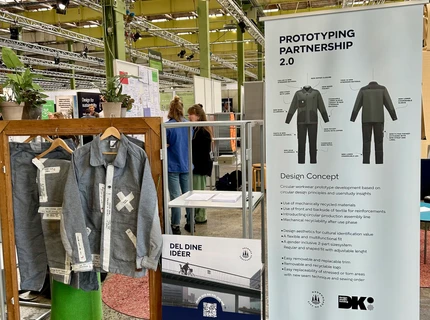
Your urine is full of plastic
37 urine samples from Eindhoven and a collaboration with Dutch chemist Špela Petric became the start of Louise Permiin’s exhaustive work with understanding and demonstrating how our consumption of various everyday items affects our bodies. Louise mixes urine with various chemicals and triggers a colour scale that spans from yellow to green and blue. Blue illustrates the highest concentration of Bisphenol-A (BpA) – a substance found in e.g. plastic bottles, supermarket receipts, tin cans and children’s toys. She says of her work:
- I was shocked when I found traces of plastic in my own urine. When the fine, dark yellow morning urine slowly changed to a wonderous dark blue. It was a weird experience, a mix of wonder at the depth of the colour and panic at what it actually meant. My wee was full of plastic. It was another shock to discover that basically everyone I ran tests on tested BpA-positive.
An installation of urine
The result of the 37 urine samples became the installation Peeing, Processing, Producing, which has already been exhibited in Holland and Denmark, and is currently touring Turkey with the WASTE exhibition. Lengths of urine induced textiles, some larger than others, varying from nearly white to nuances of yellow, neatly hung on a frame of wood and with little yellow-green fields at the bottom of each piece. A sort of 3D-graph that demonstrates colour differences in each test and, most disturbingly, indicates BpA in nearly every one.
Louise Permiin wishes to use her installation to raise awareness of our use of plastic and its effect on our bodies – but also how complex and wide ranging the discussion of plastic is. For even if we can do a lot to dodge hormone disruptive substances like Bisphenol-A, it is hard to avoid entirely.
-Microplastic particles like BpA is not filtered in the Danish treatment plants and therefore go straight into the oceans and potentially into the fish we eat. We are being cyclically connected to the food we eat and later the waste materials we shed. Unfortunately there is not enough research funds allocated to this area, which makes it an environmeltal as well as a political problem in my opinion, says Louise.
From art to ph.d.
Louise Permiin has just started her ph.d. Embodied Partnerships, - for making and managing sensible design places and practices at Design School Kolding. Here she takes a step further to examine how a sense-based practice can create an understanding of the textile industry’s effects on the environment, and how they manifest themselves. Where Peeing, Processing, Producing attempted to come to an understanding of how our consumption affects the body, she now expands her repertoire to include everything organic – both plants, insects, animals AND people. With this project she seeks to experiment with how these investigations can create a coherent, tangible communication for future partnerships and sustainable collaborations between designer, production and environment.
Bisphenol-A
Bisphenol-A (BpA) is an organic, chemical compound that works as a building block in the production of polycarbonate plastic and epoxy resins. When BpA is converted to plastic, a small amount remains in the plastic. 3.8 million tonnes of BpA is used annually in the world’s plastic production.
“-Microplastic particles like BpA is not filtered in the Danish treatment plants and therefore go straight into the oceans and potentially into the fish we eat. We are being cyclically connected to the food we eat and later the waste materials we shed.Louise Permiin”


